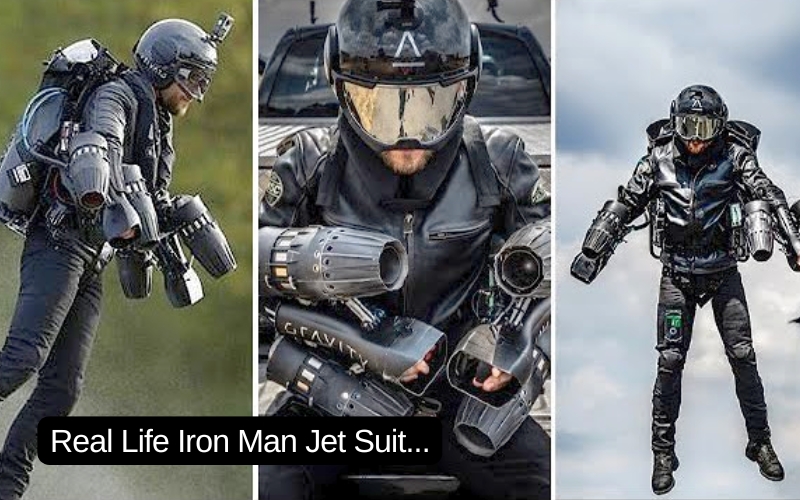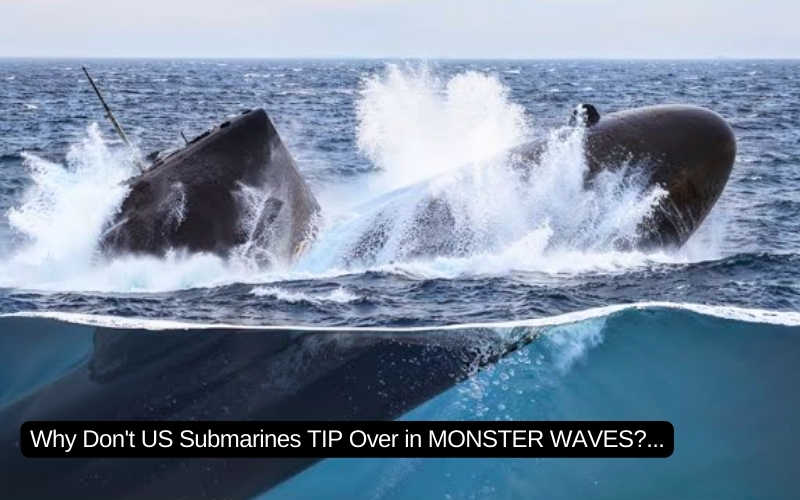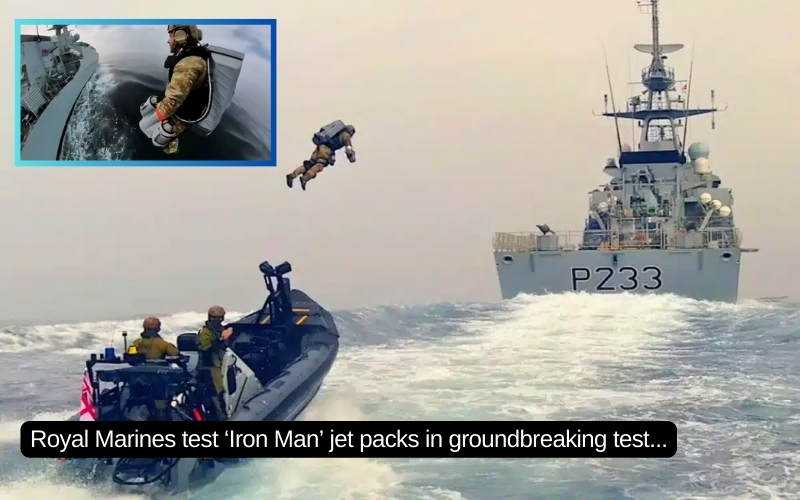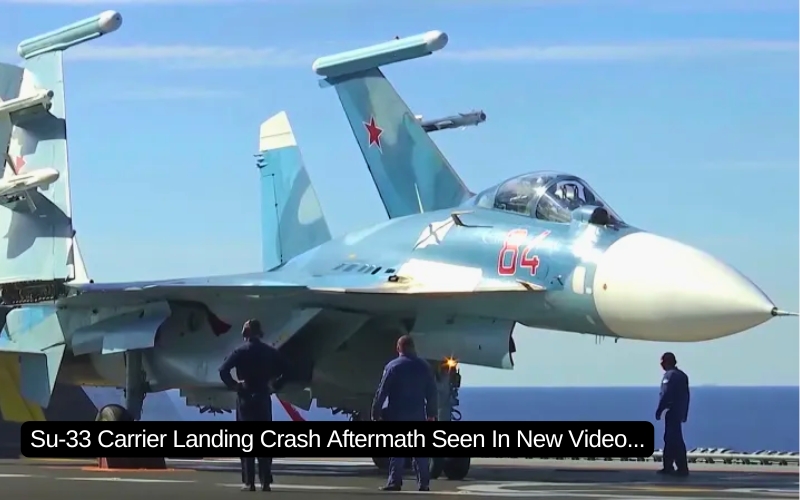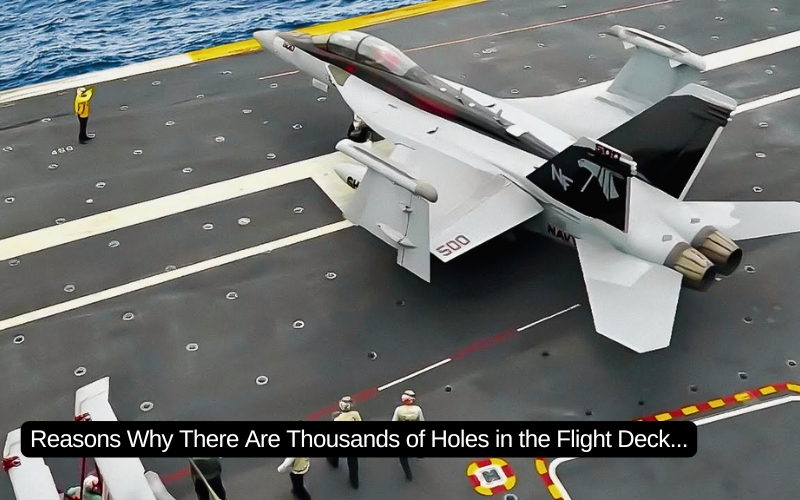Which is the largest and most capable military transport helicopter in the world? This Top 10 analysis of biggest military helicopters is based on size and payload capacity. This list do not include helicopters, that are currently being developed, or obsolete helicopters. It includes only production helicopters that are currently in service, or are ready for production.
Currently top 10 most capable military transport helicopters in the world are these:

The Mil Mi-26 is the world’s largest production helicopter. It is known in the West as Halo. Currently this heavy-lift machine is in service with nearly 20 countries, including Russia and India.
Its development began in the early 1970s. Designers had a goal to produce a helicopter with a load capacity twice that of any contemporary machine. It became operational in 1983.
The Mi-26 has the load-carrying capability of a C-130 transport plane. Its cargo area, with the rear ramp closed, is 12 m long, and 3.2 m wide, with a minimum ceiling height of 2.9 m.
The interior can be configured to seat 80 combat-equipped troops or 60 stretchers. However there were cases when it flew with 150 troops. Alternatively this cargo helicopter can carry two combat vehicles weighting 10 000 kg each. The Mi-26 can also carry various loads externally.
Latest model, the Mi-26M can lift even more. It has a payload capacity of 25 000 kg.

Recently a new CH-53K King Stallion helicopter was developed to meet requirements of the US Marine Corps. It is a further development of the CH-53E Super Stallion. Since 1974 the Super Stallion was the largest and most powerful helicopter outside Russia. It is being replaced by the latest King Stallion, which is even larger and more powerful. The CH-53K has similar airframe as its predecessor, but has notably improved performance. This heavy helicopter was first publicly revealed in 2014. The King Stallion reached initial operating capability with the US Marine Corps in 2018. Currently it is the largest and heaviest helicopter used by the US military.
This military helicopter was designed to deliver troops, vehicles and supplies from ships to shore. The CH-53K has an payload capacity of 15.9 t. It can carry around 37 troops. With centerline seats installed the King Stallion can carry around 55 soldiers. It can transport heavy weapons and vehicles externally. It is capable of lifting LAV-25 armored vehicle or M198 155 mm field howitzer with its crew and ammunition. Also it can recover downed air vehicles up to its own size. The US Navy will use a small number of these helicopters for shipboard resupply.
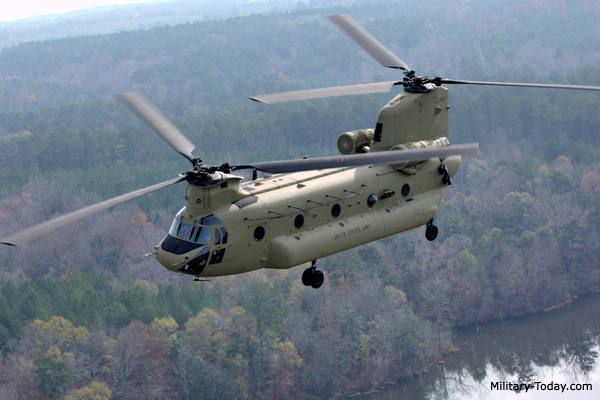
The ubiquitous CH-47 Chinook was developed to meet a US Army requirement. It first flew back in 1961.This utility helicopter became operational in 1962. Since then over 1 160 have been built, including models license-produced in Italy and Japan. It has been exported all over the world. Upgraded Chinooks are planned to remain operational with the US Army beyond 2060, or over 100 years after it first entered service.
The Chinook helicopter performs various transport missions. It transports troops, war supplies and battlefield equipment. This helicopter is also deployed in medical evacuation, search and rescue, aircraft recovery, parachute drop and other operations.
It accomodates up to 44 passengers. It can lift 10 300 kg of cargo internally and 11 300 kg externally. It has two external cargo hooks and can carry various loads, such as light vehicles or artillery pieces externally.
The CH-47F is a recent version. It can carry up to 55 passengers or up to 12 700 kg of cargo. Existing CH-47D helicopters can be upgraded to this standard, or these can be newly produced. By 2014 US Army and National Guard obtained 300 of these helicopters. The CH-47F has been exported to some countries.

The V-22 Osprey is not exactly a helicopter. It is a first operational tiltrotor. The Osprey combines vertical lift capabilities of a helicopter with a flight speed of a fixed-wing turboprop aircraft. It is used by US Army, Air Force, Marine Corps and Navy. Deliveries commenced in 2001.
Currently the Osprey is one of the largest VTOL aircraft. It accommodates 24 troops. This tiltrotor transport can carry 9 000 kg internally or 6 800 kg externally.
The Osprey can fly at a maximum cruising speed of just over 500 km/h. It is nearly twice faster than most utility helicopters can fly. Also this tiltrotor is capable of in-flight refueling.
The Osprey can operate from large amphibious assault ships or aircraft carriers. On board it can be compactly stored.
So the Osprey tiltrotor transport has a significant advantage over helicopters that it can fly twice faster and another advantage over aircraft that it lands vertically. So it can land on ships or rough terrain.

The Mi-38 is a transport helicopter, aimed both at military and civil customers. It is being proposed as a replacement for the ageing Mi-8 and Mi-17 series helicopters. Initially it was developed as an improved version of the Mi-8. However it has so many differences, that the Mi-38 is a totally new design, rather than improved version of the Mi-8. It has new airframe, engines, rotor system and avionics. It can be seen as a new generation of the Mi-8. Development of this helicopter is now complete. Its small-scale production began in 2017. In 2018 it was announced that series production of the Mi-38 began. First production helicopter was planned to be delivered to the Russian military in 2018.
For passenger transport missions this helicopter accommodates up to 32 troops. It can carry 5 000 kg of cargo internally or 7 000 kg externally.
Various versions of the Mi-38 are planned to be produced for different missions. Equipment may be fitted for emergency landing on water. Also it can be adopted as an ambulance.

The Eurocopter (now Airbus Helicopters) EC 725 Super Cougar or Caracal is a long-range tactical transport helicopter. It evolved from the Eurocopter Puma/Cougar family. It was specially developed to meet a French Air Force requirement for a specialist helicopter for combat search and rescue operations. The new helicopter made its first flight in 2000. First helicopter was delivered to the French Air Force in 2005. Later it has been adopted by the French Army. This helicopter has been adopted by Brazil, Indonesia, Malaysia, Mexico. Some other countries ordered this helicopter.
The EC 725 can carry up to 28 troops or 5 670 kg of payload internally. External payload is around 4 500 kg.
The EC 725 can be used not only for combat search and rescue, but also for troop and cargo transport, or casualty evacuation. This helicopter can be fitted with add-on armor plating and can operate in combat environment. Also there is an ASW version of this helicopter.

The Z-18 is a new Chinese military transport helicopter. It was developed by Changhe Aircraft Industry Group (CAIG). It evolved from a civilian Avicopter AC313, which in turn is based on a Z-8 naval anti-submarine warfare and utility helicopter. The Z-18 is the largest military helicopter ever developed in China. The new helicopter was first publicly exposed in 2014. It seems that the Z-18 is already in service with Chinese military. It will gradually replace older Z-8 helicopters.
The Chinese Z-18 helicopter is based on the Harbin Z-8 design, but has a redesigned fuselage and more powerful engines. As a result the new Z-18 has more internal space, can carry more payload and has overall better performance at higher altitude and temperature. It has been reported that composites and titanium are extensively used in production of this helicopter.
This helicopter accommodates about 27 passengers. It can transport 4 000 kg internally or 5 000 kg externally.
During a test flight in Tibet the Z-18 broke a record by attaining an altitude of 9 000 m and flying above Mount Everest. It is the first time a large helicopter managed to fly that high.

The AgustaWestland AW101 was developed as a modern naval utility helicopter. Previously this chopper was known as Eurocopter Industries EH101. It was jointly produced by Agusta of Italy and Westland Helicopters of United Kingdom. However in 2000 Agusta and Westland Helicopters merged and formed AgustaWestland. Since 2007 this helicopter is marketed as AgustaWestland AW101. There are utility and anti-submarine warfare versions of this helicopter.
The EH101/AW101 is in service with Italy and United Kingdom. It has been exported to Algeria, Canada (CH-149 Cormorant), Denmark, Nigeria, Portugal, Saudi Arabia, and Turkmenistan. It is license-produced in Japan and United States. It is worth noting that Britain, Denmark and Portugal use the name Merlin for this helicopter.
Utility version of the AW101 accommodates 26 soldiers. Payload capacity is around 4 000 – 5 000 kg. This amount of cargo can be carried internally or under slung. Furthermore Royal Air Force operates a Merlin HC.Mk.3 version, that accommodates a maximum of 45 troops or up to 6 000 kg of payload internally.

The Mil Mi-8 is one of the most prolific utility helicopters ever built with over 7 300 examples manufactured since 1961. Its export version the Mi-17, was widely exported. This helicopter is in service with more than 60 countries. Variants of this prolific helicopter are still produced today.
The most widely built version for military customers is the Mi-8T, the standard utility transport. It accommodates 24 troops. Alternatively it can transport 4 000 kg of cargo internally or 3 000 kg externally.
The Mi-8TB is an armed derivative, that packs a heavy punch with a trainable machine-gun, bombs, rockets and anti-tank guided missiles.
This helicopter has given rise to a bewildering range of versions that fulfil a wide variety of specialized roles. Dedicated combat support variants include airborne reserve command post, electronic counter measures, communications intelligence and command relay. Other versions carry out delivery of fuel to front-line units, photo-reconnaissance, artillery fire-correction, reconnaissance, VIP transport, minelaying and mineclearing.

In 1985 five European nations signed a memorandum of understanding covering a NATO helicopter for the 90s, or NH90. The UK dropped out of the programme in 1987 in favor to the EH 101, leaving France, Germany, Italy and the Netherlands in the project by means of NH Industries.
The two initial versions were the NH90 NFH (NATO Frigate Helicopter) for the autonomous anti-submarine warfare and anti-ship roles, and the NH90 TTH (Tactical Transport Helicopter) for assault transport, rescue, electronic warfare and VIP transport duties.
These helicopters are in service with France, Germany, Italy and the Netherlands. It has been exported to Australia, Belgium, Greece, New Zealand, Norway, Oman and Sweden.
The NH90 TTH transport helicopter accommodates 20 troops. Alternatively it can carry 2 000 to 5 000 kg of cargo internally or 4 200 kg externally.




